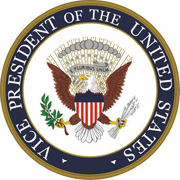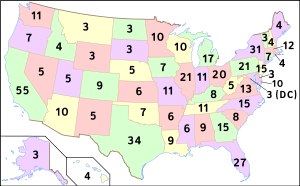How the U.S.
Presidential Elections work
A quick guide to the process
of electing the President of the United States of America.
 OGPaper.com has been following the major political events
as part of our 2008 You Bet™
Presidential Elections betting odds watch. Over 1 million people
are expected to bet on the U.S. Presidential Elections all over
the world, and one of the many questions we have been emailed is
"How do the Presidential Elections actually work?"
OGPaper.com has been following the major political events
as part of our 2008 You Bet™
Presidential Elections betting odds watch. Over 1 million people
are expected to bet on the U.S. Presidential Elections all over
the world, and one of the many questions we have been emailed is
"How do the Presidential Elections actually work?"
Below we have compiled a quick and
(hopefully) simple guide to how the elections work. It should
help many foreign readers of our newspaper, as well as young
Americans who are eligible to vote for President in 2008 and
would like to know what they are getting themselves into.
First, it is important to know that the United
States presidential election is indirect. That means that it is
not the people who chose the next President, rather than the
United States Electoral College. This fact may surprise many
readers, especially from Europe, where if 1 million people vote
for a President, that candidate would receive 1 million votes.
It is not like that in America. In the United States the total
number of votes is set at 538 since 1964, because there are that many
Electoral College members (electors).
 Each of the states is allocated as many electors as the number
of Representatives and Senators in the United States Congress
that state has.
Each of the states is allocated as many electors as the number
of Representatives and Senators in the United States Congress
that state has.
On the left is the map with the number of
electors per state as of 2006.
When the people vote, although they cast
their vote for one of the presidential candidates, their vote is
not counted towards the total vote count for President and Vice
President, rather they are actually choosing Electors from their
state. In turn, the Presidential Electors
cast their vote, called "electoral vote", for the President and
the Vice President. Confusing? You bet. Here is an example -
let's say that 1 million voters in the State of Michigan come
out and all of them vote for John Smith. Because Michigan has 17
electoral votes (see map above), John Smith would get a total of
17 votes for the Presidential Election, rather than 1 million
votes.
This means that a Presidential candidate can
have the majority of the popular vote (the votes cast by the
people), but that doesn't mean he has won the Elections. Here is
another example: let's say that total of 2 million people vote
in South and North Dakota for candidate A, and this is the
majority, and that 1 million people vote in Georgia for
candidate B, and this is the majority for that state, the
candidate B wins the Presidential Elections, as North and South
Dakota have combined 6 electoral votes and Georgia has 15
electoral votes.
Keep in mind that the Presidential Electors
could vote for anyone they choose to, but with rare exceptions
they vote for the designated candidates. The Congress remains
the last judge of the electors, but there has not been a dispute
since 1877.
Basically, when you vote for President,
you don't vote directly, but you "tell" the electors in your
state who should they vote for.
Now, if no candidate for President
manages to receive an absolute electoral majority of 270 votes
out of the 538 possible, then the House of Representatives goes
in session to determine the next President. The House chooses
from the three candidates who received the most votes, and each
state casts one vote, which is determined by the majority
decision of the delegation from that state, i.e. total of 50
votes are cast. If a state delegation were to split evenly, that
state would be considered as abstaining. If the House of
Representatives also ends up in a tie 25 to 25 votes, then it
goes to the United States Senate and the process is the same.
And if the Senate also ties, then the current Vice President
casts his/her tie-breaking vote.
This is the basic of how the Presidential
Election works. Email us with questions and suggestions for
future articles at
news@ogpaper.com
Here are a couple of interesting facts
about the Presidential Elections:
The 23rd Amendment states that the
District of Columbia (D.C.) can have as many electors as it
would if it were a state, but it cannot have more electors than
the least populated state. Currently Wyoming is the least
populated state and it has 3 electoral votes, thus the District
of Columbia is currently allocated only 3 electoral votes.
The right to vote for President is not
given to the citizens by the federal government, but rather by
the state or local government. This means, that despite the
popular belief, the right to vote for President is not
constitutionally protected and individual states do have a right
to bar its citizens from voting for President.
 Published on 08/10/2007
Published on 08/10/2007
Related:
E-mail:
news@ogpaper.com